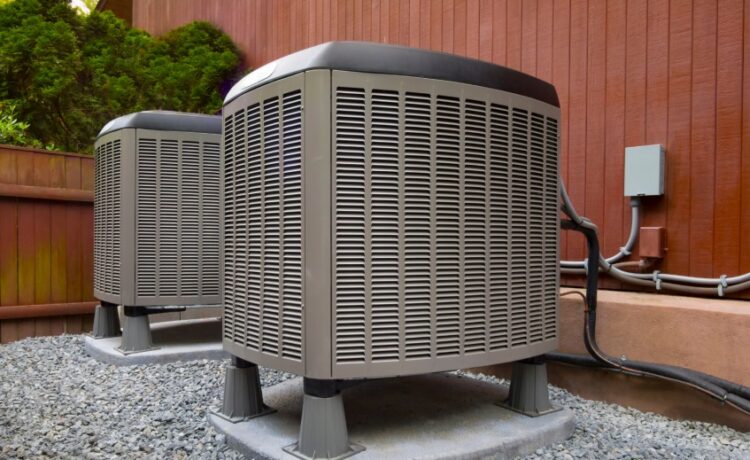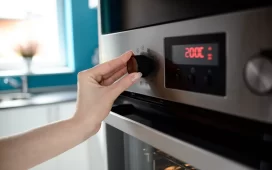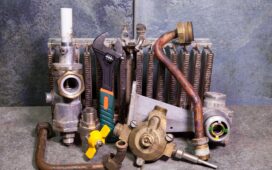When winter’s chill creeps in, a reliable furnace is essential to keep your home warm and comfortable. However, selecting the right one can be overwhelming with various furnace options on the market. Homeowners often weigh the pros and cons between an electric furnace and a gas furnace, each offering unique features and efficiency ratings that influence long-term costs. Understanding the basics of HVAC furnaces, from their operational features to energy efficiency metrics, can make a significant difference in comfort, energy savings, and environmental impact.
This guide dives into the key aspects of HVAC furnaces, helping you make an informed choice that best suits your home’s needs and budget.
Types of HVAC Furnaces: Electric vs. Gas
HVAC furnaces typically fall into two main categories: electric and gas. Let’s explore the differences between these types and their benefits and potential drawbacks.
Electric Furnace
An electric furnace uses electric resistance coils to generate heat. Electricity flows through the coils, causing them to heat up and produce warmth distributed through your home’s ductwork. Here are some advantages and disadvantages of electric furnaces:
-
Pros:
-
Low Maintenance: Electric furnaces require less maintenance than gas models since they have fewer components prone to wear, such as gas valves and burners.
-
Safety: There’s no combustion involved, reducing the risk of gas leaks or carbon monoxide exposure.
-
Longevity: Electric furnaces often have a longer lifespan than gas models, averaging 20-30 years with regular maintenance.
-
-
Cons:
-
Operating Costs: Electric furnaces tend to be more expensive to run due to the higher cost of electricity in many areas.
-
Heating Speed: They may take longer to heat a space than gas furnaces, which can be noticeable in larger homes.
-
Gas Furnace
A gas furnace uses natural gas to generate heat, providing rapid and powerful warmth. The process involves igniting the gas in a burner, which then heats the air that circulates through the home.
-
Pros:
-
Energy Efficiency: In regions where natural gas is affordable, gas furnaces can be more cost-effective regarding operating expenses.
-
Faster Heating: Gas furnaces heat up quickly, making them ideal for cold climates where immediate warmth is needed.
-
Lower Carbon Footprint: When natural gas is used responsibly, gas furnaces can have a smaller carbon footprint compared to electricity derived from fossil fuels.
-
-
Cons:
-
Maintenance: Gas furnaces require regular maintenance to ensure safe operation and efficiency, including checking gas lines and burners.
-
Safety Concerns: Gas leaks and carbon monoxide emissions are risks, underscoring the importance of proper installation and ventilation.
-
Understanding Furnace Efficiency Ratings
Efficiency is crucial in determining the long-term cost of operating an HVAC furnace. Here’s how efficiency is measured in both electric and gas furnaces, along with the common ratings to look for.
Annual Fuel Utilization Efficiency (AFUE)
For gas furnaces, efficiency is measured by the Annual Fuel Utilization Efficiency (AFUE) rating. This metric indicates how much fuel a furnace converts into heat for your home. For example, a furnace with an AFUE of 90% converts 90% of the fuel into heat, while the remaining 10% is lost in the exhaust. Higher AFUE ratings signify more efficient furnaces, with most high-efficiency gas furnaces having ratings between 90% and 98%.
Heating Seasonal Performance Factor (HSPF)
The Heating Seasonal Performance Factor (HSPF) is used for electric furnaces with heat pumps. This rating measures heat pumps’ efficiency, calculating the heating output ratio to the amount of energy used over an average season. The higher the HSPF, the more efficient the furnace. Units with an HSPF rating of 8 or above are generally considered energy-efficient.
Energy Star Certification
The Energy Star label is another indicator of efficiency. Furnaces that receive this certification meet stringent energy efficiency guidelines set by the U.S. Environmental Protection Agency. Electric and gas furnaces with the Energy Star label generally offer savings on energy bills due to their optimized performance.
Key Features to Consider in HVAC Furnaces
Modern furnaces have advanced features that enhance performance, comfort, and energy savings. Here’s a look at some popular furnace features:
Variable Speed Blowers
Variable speed blowers adjust the furnace’s fan speed based on your home’s heating needs, creating consistent and even heat distribution. This feature improves comfort by reducing temperature fluctuations and boosts energy efficiency by using less power than traditional single-speed blowers.
Two-Stage Heating
A two-stage furnace operates in two modes—low and high. The low stage runs most of the time, delivering steady, gentle warmth, while the high stage kicks in only during extremely cold temperatures. This system reduces energy usage, maintains consistent indoor temperatures, and operates quietly.
Programmable Thermostats
Pairing your furnace with a programmable thermostat can lead to substantial energy savings. These thermostats allow you to set schedules for your furnace, so it automatically reduce heating during off-peak hours or when you’re away, minimizing wasted energy.
Modulating Furnaces
Modulating furnaces adjust the heating output in small increments, providing highly precise temperature control. These furnaces maintain a consistent temperature by adjusting the flame’s intensity based on the desired heat level, reducing energy consumption and enhancing comfort.
Cost-Saving Tips for Furnace Operation
The cost of operating a furnace can add up, especially in colder months. However, you can reduce your heating bills with these effective cost-saving strategies:
Regular Maintenance
Consistent maintenance, including changing filters, inspecting burners, and checking gas connections, can keep your furnace running efficiently. A well-maintained furnace operates more smoothly, using less energy and extending its lifespan.
Seal Air Leaks
Air leaks around windows, doors, and ductwork can lead to heat loss, causing your furnace to work harder than necessary. Sealing these leaks can help keep warm air inside, allowing your furnace to operate more efficiently and lowering energy costs.
Invest in Insulation
Proper insulation in your walls, attic, and floors can significantly impact how well your home retains heat. Quality insulation reduces the work your furnace needs, leading to energy and cost savings over time.
Set an Optimal Thermostat Temperature
Keeping your thermostat at a moderate temperature can significantly reduce your heating costs. The Department of Energy suggests setting your thermostat to 68°F while awake and lowering it when you’re asleep or away.
Consider Zoning Systems
Zoning systems allow you to divide your home into different areas or zones, each with its thermostat. This setup ensures you’re only heating the areas you’re using, preventing energy waste and reducing your heating bill.
Choosing the Right Furnace for Your Home
Selecting between an electric furnace and a gas furnace depends on several factors, including your climate, budget, and personal preferences. Here are some tips to help you make an informed decision:
-
Climate Considerations: A gas furnace may provide faster and more efficient heating if you live in a colder climate. An electric furnace might be sufficient in milder climates and offer lower installation costs.
-
Installation Costs: Gas furnaces generally have higher upfront installation costs due to the need for gas lines and venting. On the other hand, electric furnaces are typically easier and less costly to install.
-
Operational Costs: Electric furnaces have lower installation costs but can be more expensive to operate over time. Gas furnaces tend to have lower operating costs, especially in areas where natural gas prices are low.
Environmental Impact and Sustainability
With growing awareness of environmental concerns, the choice between an electric and gas furnace can also be based on sustainability.
Electric Furnaces
Electric furnaces are often seen as more eco-friendly, especially in areas with renewable energy sources. Although they may have higher operating costs, electric furnaces can be greener if your power provider uses solar, wind, or other renewable sources.
Gas Furnaces
Gas furnaces, though energy-efficient, rely on fossil fuels. However, modern gas furnaces emit fewer greenhouse gases than older models, thanks to advanced combustion technologies and high-efficiency ratings. Homeowners can also consider using biogas, a renewable form of natural gas, where available.
Conclusion: Making an Informed Choice
Both electric and gas furnaces have distinct advantages when it comes to heating your home. Electric furnaces may appeal to those prioritizing lower maintenance and eco-friendliness, particularly in areas with renewable energy sources. Meanwhile, gas furnaces provide quick, powerful heat and can be more cost-effective in colder regions where natural gas is affordable.
Understanding the key features, efficiency ratings, and cost-saving techniques can help you make the best choice for your household’s comfort and energy needs. Whether installing a new furnace or upgrading an existing one, consider consulting an HVAC professional who can guide you through the options and help you select a furnace that suits your unique requirements.






